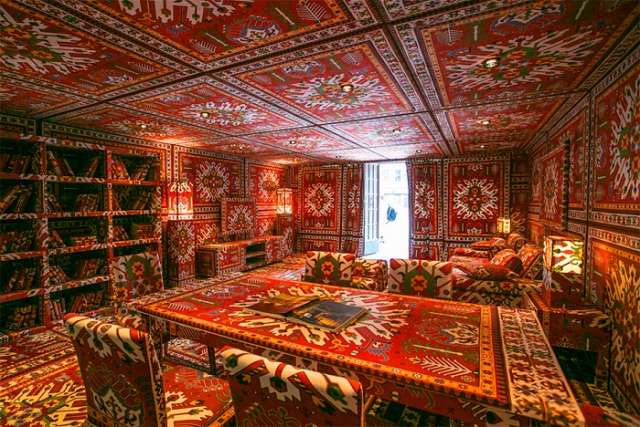Carpet weaving is closely connected with the daily life and customs of the communities involved, its role reflected in the meaning of the designs and their applications. Thus, girls seated on carpets tell fortunes and sing traditional songs at Novruz (the regional New Year). The carpet is widely used for home furniture and decoration, and special carpets are woven for medical treatment, for wedding ceremonies, the birth of a child, mourning rituals and prayer.
As early as the Midlle Ages, Azerbaijani carpets were exported to foreign markets. In the 14th century they were exported to Europe. The carpets were represented in canvas by İtalian, Dutc and Flemish painters of the 14th-18th cc., for example, in Hans Memling`s "Maria with the Child" and the Hans Holbein`s "Ambassadors" (16th c.); Carlo Crivello`s "Announcement" (15 th c.). In these paintings Karabakh, Ganja, and Kazakh carpets are represented.
Today many museums of the world are in possession of Azerbaijani carpets.
The Azerbaijani carpet is a traditional handmade textile of various sizes, with dense texture and a pile or pile-less surface, whose patterns are characteristic of Azerbaijan`s many carpet-making regions. So Azerbaijani carpets are divided into 7 regional groups: Guba, Baku, Shirvan, Ganja, Kazakh, Karabakh, and Tabriz.
More about:
















































